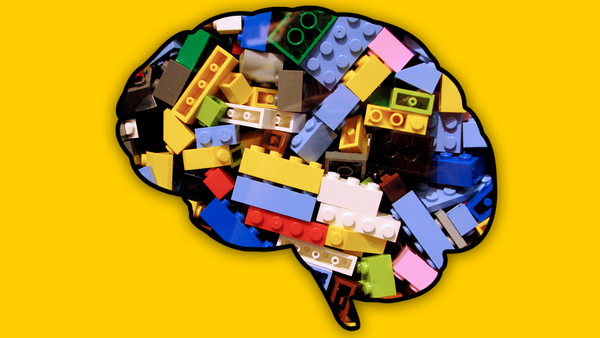Why better short-term memory is the key to smarter AI
For LLMs and other AI models to reach their full potential, they must evolve beyond a goldfish-like recall of previous interactions.

Picture having a conversation with someone who doesn’t remember what you said the day before – frustrating, right? This is a challenge many generative AI systems encounter. While Large Language Models (LLMs) are packed with knowledge, they often lack the vital memory needed to make interactions more intelligent and tailored to the individual.
For AI to truly evolve, it must integrate both knowledge and memory, much like the human mind. While our brains naturally link past experiences with current ones, AI requires carefully designed memory systems to replicate this ability and offer more meaningful and personalised exchanges.
The importance of memory in AI agents
LLMs come pre-loaded with impressive ‘world knowledge’, making them powerful information resources. However, this knowledge often reflects the long-term average of human understanding, which on its own isn’t enough to deliver powerful, personalised experiences. LLMs are essentially ‘stateless’, meaning they don’t retain memory between interactions. With a limited context window, they often lose track of longer conservations and can’t recall personal preferences or past interactions. This leads to repetitive exchanges, poor adaptability to new information, and a generic, one-size-fits-all experience.
In contrast, when you interact with a customer service representative, their effectiveness is driven not just by their training but by their ability to remember past conversations, track ongoing discussions, and adjust their responses to fit your unique situation. This kind of personalised, adaptive interaction is something that LLMs without memory can struggle to replicate.
According to Deloitte, four out of five customers expect brands to understand their individual needs, and 66% expect companies to anticipate those needs. Without robust memory capabilities, AI agents fall short of these expectations — forcing users to repeat themselves and endure fragmented, impersonal experiences.
And then during that conversation you have provided some very important piece of informationMemory models driving AI innovation
Modern AI systems are becoming more sophisticated by integrating various memory mechanisms that enhance user interactions and functionality. Context retrieval (RAG) acts like a research assistant, fetching real-time information from external sources to provide more relevant and up-to-date responses.
This is especially valuable in industries like healthcare, where AI can access the latest treatment guidelines, even after the system’s initial training. Meanwhile, semantic caching helps reduce processing loads by storing frequently used responses, making high-traffic applications more efficient. This is particularly useful for customer service platforms, which can offer quick, consistent answers during peak times like holiday shopping seasons.
READ MORE: Degenerative AI: ChatGPT jailbreaking, the NSFW underground and an emerging global threat
Other memory systems, such as agentic memory, take personalisation to the next level. This mechanism retains long-term user preferences across multiple interactions, enabling AI to remember details like seating preferences or hotel choices. While agent state acts as a short-term, real-time workspace, managing complex tasks or ongoing conversations.
In e-commerce, this helps AI assistants track product comparisons or selection criteria, enhancing the shopping experience. Together, these memory systems make AI interactions more intelligent and seamless, ensuring they don’t feel disconnected or forgetful, like speaking to someone who’s always in the dark about your previous conversation.
Building authentic human connections
When AI can dynamically recall information and tailor responses in real-time, customer interactions transform from transactional to truly personal. Instead of relying on static profiles, AI can adapt to customer behaviours, moods, and histories - creating experiences that feel remarkably intuitive.
These capabilities are already powering real-world AI agents today, quietly transforming the way we interact with technology. In healthcare, memory systems are helping platforms track medication allergies and past symptoms, making it possible to connect the dots between seemingly unrelated complaints and improve diagnostic accuracy.
In finance, AI advisors are learning from past client behaviours – remembering investment preferences and spotting shifts in risk tolerance – to offer more personalised guidance. Even in our homes, smart systems are learning our habits, recognising simple cues like ‘movie night’ to automatically create the perfect setting, from lighting and temperature to opening your go-to streaming service.
READ MORE: Could Claude Opus 4 help to build bioweapons? Anthropic can't rule out "catastrophic" misuse risk
Imagine an e-commerce assistant that not only remembers your previous purchases but understands your style preferences, anticipates seasonal needs, and adjusts tone based on your interaction patterns. This goes beyond convenience to create genuine connection and brand loyalty.
At scale, these memory capabilities enable businesses to identify patterns, predict trends, and continuously refine customer experiences, turning individual interactions into collective intelligence.
Performance at the core
Even the most advanced memory systems become useless if they're too slow. Users abandon conversations when AI responses lag, making response time a critical success factor for AI applications. For example, studies show that 40% of website visitors abandon sites that take more than 3 seconds to load. AI interactions face even stricter standards—users expect near-human response times of less than a second.
This is where infrastructure becomes decisive. High-performance data storage systems, with sub-millisecond latency and massive scalability, provide the foundation needed for AI systems to retrieve and process memory at human-conversation speeds. By enabling seamless context switching and real-time adaptation, these tools help AI systems operate with human-like recall efficiency.
Your AI’s not forgetting anymore
Top AI platforms now feature advanced memory systems that recall user preferences and past interactions across sessions, delivering personalised responses without repetition. As AI becomes standard in customer experience, sophisticated memory capabilities – not just AI itself – will differentiate competitors. Companies investing in robust memory infrastructure can create AI interactions that feel genuinely personal. Tomorrow’s AI success depends not just on intelligence, but on how effectively systems remember and use those memories to build authentic human connections.
Manvinder Singh is VP of Product Management for AI at Redis




